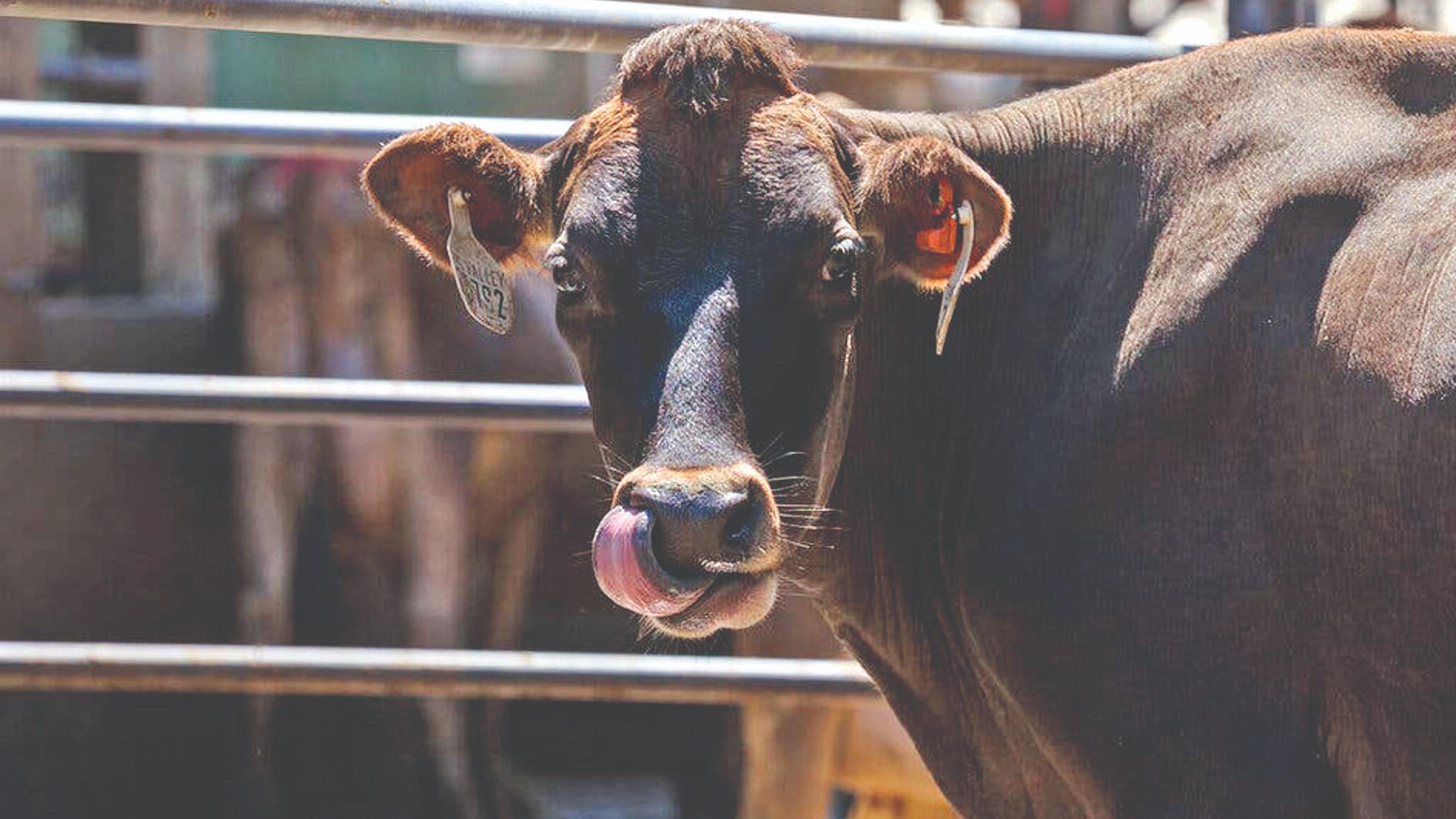Hemp-fed cows get buzzed, but who will drink their milk?
Compared with cows that received the usual diet of corn and hay, the hemp-fed Holsteins were more chilled out, salivated and yawned more often, and frequently engaged in whimsical tongue play, the study found.

By ANDREW JACOBS
Do cows that consume cannabis act goofy, get the munchies and spend more time lolling about with their stoned buddies? It may sound like the beginning of a bad joke, but German researchers seeking to understand the effects of feeding dairy cows THC, the psychoactive compound found in industrial hemp, made a few intriguing discoveries, according to a study published this week in the journal Nature Food.
Compared with cows that received the usual diet of corn and hay, the hemp-fed Holsteins were more chilled out, salivated and yawned more often, and frequently engaged in whimsical tongue play, the study found. They also spent more time lounging around the barn as they chewed their cud and ruminated the universe. They did not, however, exhibit a proclivity for binge eating. Although the behavioral changes were noteworthy, they were in some ways the unintended consequences of an experiment by researchers at the German Federal Institute for Risk Assessment, who were seeking to learn how THC-laden hemp might affect dairy production. The scientists also wanted to know whether THC, short for tetrahydrocannabinol, could find its way to humans through milk.
Those questions are especially pertinent to American hemp growers, who have struggled to find an outlet for the roughly 24,000 tons of organic matter leftover once cannabinoid compounds like CBD are extracted from cannabis sativa, the flowering plant that produces widely divergent levels of THC depending on the cultivar.
The main difference between hemp and marijuana is the level of THC — hemp cannot contain more than .3 percent of THC. Long prized for its textile and rope-making fibers, hemp was banned in the 1930s during a spasm of anti-drug fervor that is perhaps best captured by the cult classic film “Reefer Madness.”
In the United States, Congress reversed the prohibition on hemp cultivation in 2018, which has fed the expanding market for CBD oil and myriad products containing it, but hemp cannot legally be fed to livestock. “Hemp farmers are struggling to deal with tons of this unwanted biomass,” said Jonathan Miller, general counsel of the U.S. Hemp Roundtable, an industry group.
The German study provides both hope for growers and reasons for caution. Researchers discovered that the naturally occurring but limited levels of THC in most industrial hemp had no effect on the 10 cows in the experiment. But when they fed the animals flower buds and leaves — parts of the hemp plant that contain higher concentrations of the THC — researchers found that the cows ate less and that milk production dropped significantly.
That said, THC became undetectable soon after the hemp was removed from the cows’ diet. Apparent signs of intoxication, including red-rimmed eyes, runny noses and what the study authors described as an “unsteady gait” and “abnormal posture” faded within two days after the cows went cold turkey. “Hemp is a very versatile and valuable crop, but we have to be careful when considering whether to feed it to food-producing animals,” said Dr. Pieper, who heads the food chain safety division at the German Federal Institute.
Jacobs is a journalist with NYT©2022
The New York Times
Visit news.dtnext.in to explore our interactive epaper!
Download the DT Next app for more exciting features!
Click here for iOS
Click here for Android



